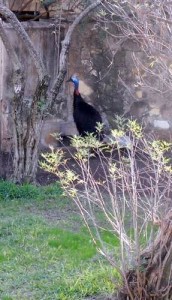First Australians, by Michael Finkel, photographs by Amy Toensing
In this article, Finkel spends two weeks living with the people who were, at the time, still referred to as “Aboriginals,” and the photographer, Amy Toensing, spent three years photographing them. I’m trying to find out whether “Aboriginals” is the currently correct term, but it’s the one that, Finkel assures us, the Aboriginals used themselves at the time.
Apparently, “Aboriginal” is now an adjective, modifying, “people.” Aboriginal people can also be referred to as Indigenous people. If you know someone’s tribe, that is, of course, the best way to refer to them. Since Finkel tells us that these people are Yolngu (also apparently spelled “Yolŋu,” but that seems almost a little OCD to me), maybe that’s how I should refer to them. Let’s see how that works out.
Yolngu live in kinship groups. Matamata, the village, that Finkel visits, is led by a matriarch. Aboriginal people have two names, an English name and an Aboriginal name, and they generally go by their Aboriginal name. Under this rule, the matriarch of Matamata is called Batumbil.
Finkel goes along on at least one green sea turtle hunting expedition and witnesses a funeral. The green sea turtle is the main source of food for the people of Matamata, which was a source of conflict for me. I have fond memories of the honu that I saw in Hawaii during Alex and my 2012 trip. On the other hand, people have got to eat. If the killing of green sea turtles upsets you more than just “conflicted,” however, you may want to avoid the photograph on Page 67, in which the insides of a sea turtle are on its outside.
Maxed Out on Everest, by Mark Jenkins
Jenkins, a mountain climber whom we last saw/will see in September 2015, gives us an overview of some of the problems that Everest was facing in 2013, and which it is still facing today. As weather prediction becomes more accurate, climbers are starting to cluster together on the same few days a year (at the time this article was published, a record 234 people reached the summit on May 19, 2012. Only around 4,000 people have climbed the mountain ever, so having 6% of that total on one day, well, you can kind of see the problem.
More companies are leading expeditions, which leads more people, some of whom are not really trained for summitting mountains of Everest’s stature, to attempt to climb the mountain. This contributes to crowding among people who attempt the mountain but stop short of the summit.
Garbage, human waste, and dead bodies litter the mountain. They are moving some of the bodies from view, most famously the man known as “Green Boots,” who has been missing since 2014.
Jenkins lists some suggestions including limiting the number of permits issued during a year, reducing both the number of operators who can guide groups up the mountain and the size of the groups they can lead, requiring previous mountain-climbing experience before issuing a permit, and requiring groups to remove their garbage and excrement. Jenkins also suggests removing the bodies of climbers who have died, but the only way to bring a dead body down is to send a team of Sherpas to remove the bodies, at risk to their own lives. The only other way to get rid of a dead body on Everest doesn’t really involve getting rid of the body, so much as pushing it off the side of the mountain into a ravine, which is nicer for the living climbers, but doesn’t seem a whole lot more respectful to the dead.

